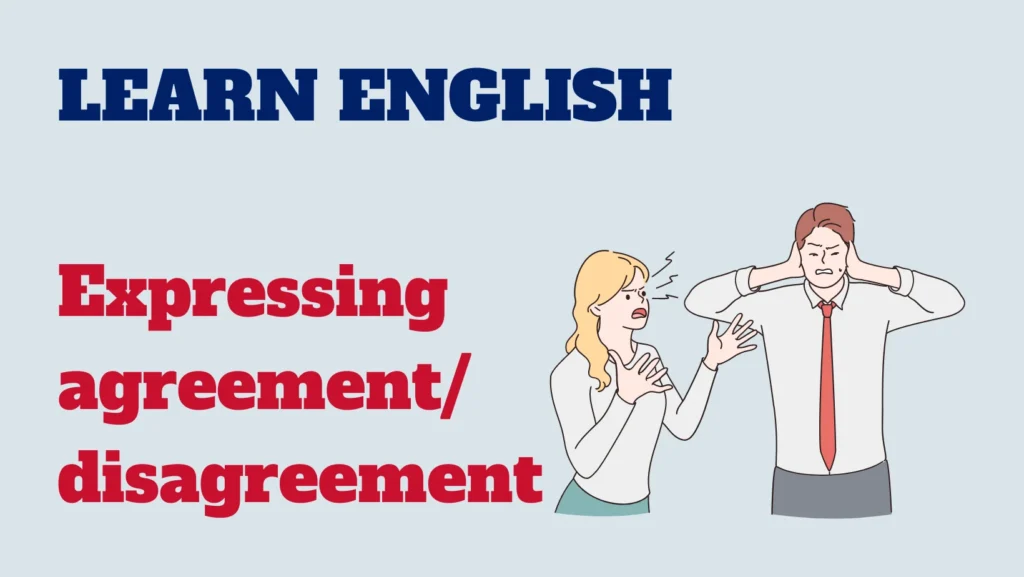One of the essential skills in learning a new language is the ability to express agreement or disagreement.

In this lesson, we’ll explore the different ways to do this in English, emphasizing politeness and effective communication.
Expressing agreement
I agree
This simple phrase means that you agree with what has been said.
Example:
Q: Do you think English is a beautiful language?
A: Yes, I agree.
Exactly
This response reinforces your agreement and shows that you completely agree.
Example:
Q: This place is beautiful, isn’t it?
A: Exactly!
Absolutely
A positive and assertive response to show strong agreement.
Example:
Q: Do you accept this proposal?
A: Absolutely.
I share the same opinion
This expression indicates that you share the same viewpoint.
Example:
Q: I think this book is incredible.
A: I share the same opinion.
That’s correct
Use this expression to confirm that what has been said is correct.
Example:
Q: It’s hot today, isn’t it?
A: That’s correct.
Expressing disagreement
I disagree
The most direct way to express that you disagree.
Example:
Q: Do you think English is a difficult language?
A: No, I disagree.
I don’t think that’s the case
A more nuanced way to express your disagreement while being polite.
Example:
Q: Is it easy to learn English, right?
A: I don’t think that’s the case.
I understand your point of view, but…
Use this phrase to express disagreement while showing that you understand the other person’s opinion.
Example:
Q: Horror movies are exciting, aren’t they?
A: I understand your point of view, but I don’t find them exciting at all.
I’m not sure that’s correct
This phrase indicates disagreement while leaving room for discussion.
Example:
Q: Spinach is the best vegetable, isn’t it?
A: I’m not sure that’s correct.
I think the opposite
This simple response clearly indicates your disagreement.
Example:
Q: Classical music is boring, isn’t it?
A: I think the opposite.
Knowing how to express agreement and disagreement is essential for effective communication in English. Choose the response that best fits the situation while maintaining a respectful and polite tone. This will help you develop your language skills and interact smoothly with native speakers. Happy practicing, and keep learning!



